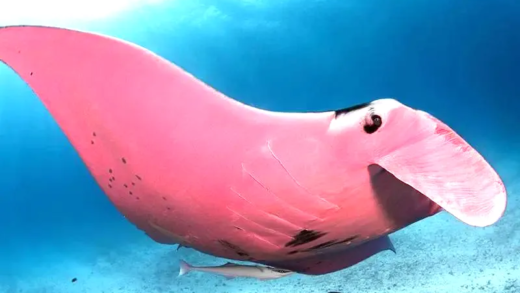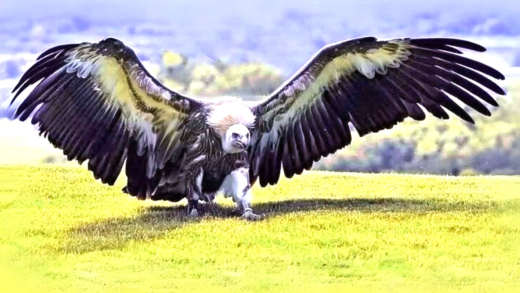Paleontology, the study of prehistoric life, reveals insights into evolution, ancient climates, and biodiversity. It debunks myths about dinosaurs, highlights technological advancements in fossil analysis, and underscores the relevance of prehistoric life in addressing modern environmental issues. Collaborative efforts among scientists further enhance this field, fostering interdisciplinary research for a deeper understanding of our planet’s history.
What is Paleontology?
Paleontology is the study of prehistoric life through the examination of fossils. This fascinating field combines aspects of biology, geology, and archaeology to understand how life on Earth has evolved over millions of years. Paleontologists investigate the remains of ancient organisms, such as bones, shells, and even traces like footprints. These remnants provide insight into the diversity of life forms that existed long before humans and help us comprehend the environmental changes that have shaped our planet.
The significance of paleontology extends beyond just understanding dinosaurs. It also helps us grasp the processes of evolution and extinction, offering valuable lessons about adaptation and survival in changing climates. By piecing together the puzzle of ancient ecosystems, paleontologists contribute to our knowledge of biodiversity and the history of life itself.
How Do Paleontologists Find Fossils?
Paleontologists employ a variety of techniques to discover fossils in different environments. One common method is fieldwork, where scientists explore sedimentary rock formations, riverbanks, and other natural sites where fossils are likely to be preserved. They often use tools like hammers and chisels to carefully extract fossils from rock layers. Additionally, paleontologists utilize geological maps and satellite imagery to identify promising excavation sites.
Other methods include:
- Screening: Sediment is washed through screens to catch small fossils.
- Magnetometry: This technique helps locate buried fossils by measuring magnetic fields.
- Geophysical surveys: These surveys can reveal hidden fossil beds without extensive digging.
By combining traditional excavation with modern technology, paleontologists enhance their chances of finding significant fossils that can unveil stories of ancient life.
Famous Fossils and Their Significance
Throughout history, certain fossils have become iconic due to their unique characteristics and the insights they provide into prehistoric life. For instance, the fossilized remains of the dinosaur Tyrannosaurus rex have captivated the public and scientists alike, illustrating the size and predatory nature of these ancient creatures. Similarly, the Archaeopteryx fossil showcases the link between dinosaurs and modern birds, offering critical evidence for the theory of evolution.
Other notable fossils include:
- Lucy (Australopithecus afarensis): One of the oldest known hominid fossils, shedding light on human evolution.
- Triceratops skulls: These fossils help researchers understand the diversity of ceratopsians and their behaviors.
- Fossilized trees in coal seams: They reveal information about ancient climates and ecosystems.
The significance of these fossils lies not only in their age but also in what they reveal about the past. They provide a window into the evolutionary processes that have shaped life on Earth and help us appreciate the complexity of our planet’s history.
Dating Fossils: Techniques and Methods
Paleontologists utilize various techniques for dating fossils, allowing them to determine the age of these ancient remnants. The process is essential for constructing a timeline of life on Earth and understanding the evolution of species over millions of years. The primary methods include:
- Relative Dating: This method involves comparing the age of fossils found in different layers of sedimentary rock. By studying the strata, scientists can estimate which fossils are older or younger based on their position.
- Radiometric Dating: This technique measures the decay of radioactive isotopes in fossils or surrounding rocks. For instance, carbon dating helps determine the age of organic materials up to 50,000 years old, while uranium-lead dating can date much older geological formations.
- Biostratigraphy: This approach uses the presence of specific fossils, known as index fossils, to correlate and date rock layers across different locations. It relies on the idea that certain species existed during specific time frames.
Understanding these dating techniques is crucial for paleontologists as they piece together the history of life. The accurate dating of fossils not only informs about the organisms themselves but also about the environmental conditions that prevailed during different geological periods.
Paleontology’s Role in Evolution
Paleontology plays a pivotal role in our understanding of evolution. By studying fossils, scientists gather evidence that supports the theory of evolution, illustrating how species adapt and change over time. Notable discoveries, such as transitional fossils, provide insight into how modern animals evolved from their prehistoric ancestors.
For example, the Archaeopteryx fossil is a critical link between dinosaurs and birds, demonstrating features that are characteristic of both groups. This finding supports the idea of descent with modification, a core principle of evolutionary theory.
Furthermore, fossil records reveal patterns of mass extinctions and subsequent recoveries, offering clues about resilience and adaptability. As paleontologists uncover new fossils, they continuously refine our understanding of evolutionary pathways, showing that life is a dynamic, interconnected web.
Understanding Ancient Climates through Paleontology
Paleontologists also examine fossils to study ancient ecosystems and climates. By analyzing plant and animal remains, they can reconstruct past environments, providing valuable context for current climate change discussions. Fossils can indicate what types of climates existed at various times, revealing how life adapted to shifting conditions.
For instance, the presence of certain plant species in fossilized records can signal warm or cold periods in Earth’s history. Additionally, studying marine fossils helps scientists understand past ocean conditions, including temperatures and acidity levels.
Through this research, paleontologists contribute significantly to climate science, helping us understand not only how past life forms interacted with their environments but also how modern ecosystems might respond to ongoing climatic changes.
Myths About Dinosaurs
Dinosaurs have long captured the imagination, but many misconceptions surround these ancient reptiles. One prevalent myth is that dinosaurs were all gigantic. In reality, they varied dramatically in size, from the tiny Microraptor, which was about the size of a crow, to the towering Argentinosaurus, which could reach lengths of over 100 feet. Another common belief is that dinosaurs lived alongside humans. Evidence shows that dinosaurs went extinct around 65 million years before humans appeared.
Additionally, many people think dinosaurs were cold-blooded like modern reptiles. However, studies suggest they may have been warm-blooded, similar to birds. The idea that all dinosaurs were slow-moving is also misleading; some were likely quite fast, with the Velociraptor being a prime example.
By debunking these myths, we gain a clearer understanding of dinosaurs and their place in Earth’s history. This knowledge helps highlight the complexity of prehistoric life and its connection to modern ecosystems.
Technology’s Transformative Role in Paleontology
Modern technology has revolutionized paleontology, enhancing how scientists analyze fossils and conduct research. Techniques such as CT scanning allow paleontologists to visualize the internal structures of fossils without damaging them. This non-invasive method reveals details about the biology and anatomy of ancient organisms, helping to form hypotheses about their lifestyles and environments.
Other technological advancements include:
- Digital Modeling: 3D modeling software helps in reconstructing fossils and creating virtual simulations of ancient ecosystems.
- Geographic Information Systems (GIS): GIS is used to analyze fossil distribution and understand past environmental conditions.
- Artificial Intelligence: AI is being employed to identify patterns in large datasets, streamlining the process of fossil classification and analysis.
The integration of these technologies not only accelerates research but also increases collaboration among scientists worldwide, making paleontology more dynamic and accessible.
Learning from Prehistoric Life
Studying prehistoric life is not just about understanding the past; it has significant implications for today. Paleontology provides insights into how life on Earth has adapted to dramatic changes, such as climate shifts and mass extinctions. By examining these adaptations, scientists can inform conservation efforts and strategies to combat current environmental challenges.
For example, understanding how ancient ecosystems functioned can guide modern approaches to biodiversity and habitat preservation. Additionally, research on ancient climate patterns helps predict future climate scenarios and their potential impacts on global ecosystems.
Ultimately, the lessons from prehistoric life remind us of the resilience and adaptability of life on Earth, encouraging proactive measures to protect our planet’s future.
Collaboration in Paleontology
Collaboration is key in paleontology, as it often requires expertise from various scientific disciplines. Paleontologists frequently work alongside geologists, ecologists, and climate scientists to deepen their understanding of ancient life and its environments. These interdisciplinary partnerships enhance research quality and expand the knowledge base.
For instance, by collaborating with climate scientists, paleontologists can better interpret how ancient organisms responded to climate changes. Similarly, working with geneticists allows for the exploration of evolutionary connections between extinct species and their modern relatives.
This collaborative approach not only enriches paleontological research but also promotes a holistic understanding of the Earth’s history, ultimately benefiting various scientific fields.





Comments are closed.